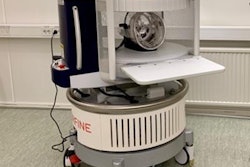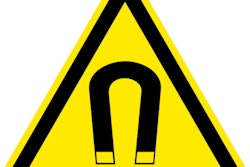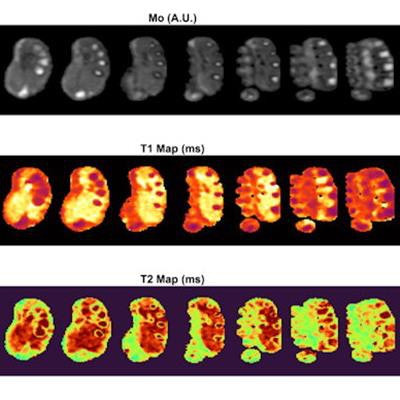
Low-field MRI is trendy in many aspects, but there are different views on how to make room for it and as yet there is little or no consensus. What is clear is that MRI will diversify, according to Mathieu Sarracanie, PhD, and Najat Salameh, PhD, co-heads and founders of the Adaptable MRI Technology (AMT) Center at the University of Basel Department of Biomedical Engineering.
As more devices emerge, some will make it and others won't, and adoption is largely down to value, Sarracanie told AuntMinnieEurope.com in an interview. Low-field MRI currently embraces two pathways. One consists of larger commercial machines with good performance but with a footprint that is still close to 1.5 tesla, and the other involves far lower-field devices which can be tailored to any environment but which may have performance issues for some applications.
"The value of ultralow-field also lies in its size and mobility. By concentrating on these to gain value, as well as balancing low cost with sufficiently high image quality, ultralow-field machines will gain mass adoption," he said.
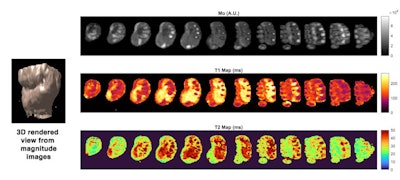 Customized 3D MR fingerprinting in vivo in the hand and wrist engineered for very low-field MRI and developed at the AMT Center in Basel. 15 slices were generated in 8.5 minutes. Figures courtesy of Najat Salameh, PhD, and Mathieu Sarracanie, PhD.
Customized 3D MR fingerprinting in vivo in the hand and wrist engineered for very low-field MRI and developed at the AMT Center in Basel. 15 slices were generated in 8.5 minutes. Figures courtesy of Najat Salameh, PhD, and Mathieu Sarracanie, PhD.Salameh compared ultralow-field MRI with other modalities, such as ultrasound, which is fast and versatile but doesn't have optimal soft-tissue contrast, and to nuclear medicine, which has high sensitivity and specificity for cancer diagnosis but conversely has poor spatial resolution.
Ultralow-field MRI has certain advantages, she noted -- but where do stakeholders want to go with it? Much will depend on whether developers can provide pertinent applications for clinical adoption.
"Low-field MRI has to be adapted to the current business plan of MRI vendors, which is dependent on increased value. This means providing tools that clinicians can apply in routine practice," she noted.
Specific advantages
Making space for everyone in the market means that there must be careful use of language, according to Salameh. Value can be missed if the same vocabulary is used for different products, as this blurs the lines between products' unique selling points. The capacity of each product, whether low-field or ultralow-field, must be clearly specified.
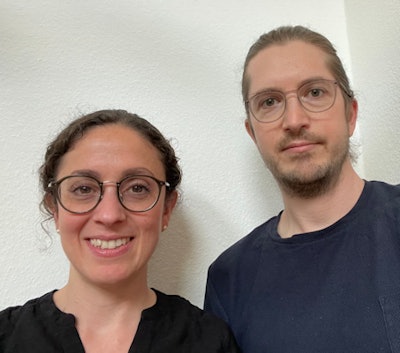 Najat Salameh, PhD, and Mathieu Sarracanie, PhD.
Najat Salameh, PhD, and Mathieu Sarracanie, PhD.Contrast for discerning pathologies and structures is one of the most overlooked aspects -- and values -- of low-field MRI. The lower the field, the more susceptible the image is to depicting molecular changes due to greater dispersion in T1 contrast, and this means more can be probed.
"There were ten shades of grey at high-field, now there are 100 shades of grey at ultralow-field. We can look at elements not accessed before and can leverage different data. Images at 0.5 T or 0.7 T are beautiful but don't provide the same information as ultralow-field can in terms of physical changes," noted Sarracanie.
Stroke diagnosis
Already, other groups are researching such benefits. In Aberdeen, U.K., a machine can modify field progressively, probing the physical properties of tissue at different field strengths in what is called a fast field cycling technique. This technique shows promise for patients with early stroke as areas of the brain affected by the stroke light up in T1 relaxation.
In the 1990s, MRI diagnosis of stroke was largely improved through diffusion but remains in a given time window -- and in a hospital environment. With a T1 marker, and an ultralow-field MRI device with a small footprint, this could be done in an ambulance, he noted.
"Identifying contrast is compelling for the clinics. To leverage the benefits of low-field and contrast, portable affordable MRI stroke workup for ambulances will exist at some point," Sarracanie said, adding that his past venture outcome, the 64mT Hyperfine SWOOP machine, holds promise as a one-stop shop and studies are ongoing.
MR fingerprinting
In addition, MR fingerprinting, which works through a model-based approach to simulate signal, works particularly well with low-field.
"MR fingerprinting could constitute a big selling point brought to low-field to grasp different contrasts of interest. It rationalizes time you don't have and works in vivo, and at the AMT center has reasonable temporal resolution, taking < 10 minutes at 0.1T to acquire an entire 3D dataset (Proton density, T1 and T2 and more) of the hand and wrist," he said.
Further progress must be made in developing tailor-made quantitative markers for ultralow-field MRI, according to Sarracanie and Salameh. These could be used to qualify relaxation times as signal contrast depends on whether imaging is T1 or T2 weighted.
Multiparametric measures could bring democratic quantification of relaxation properties and quantified maps to probe stroke, for example. As with other modalities, ultralow-field MRI will also leverage deep learning in several areas -- to improve reconstruction, gain in acquisition speed for direct imaging, or extend low-field MRI to new applications such as temperature mapping to probe therapies such as hyperthermia cancer treatment.
Noise issues
Combating noise remains the main challenge in MRI, but even this issue has different solutions in low-field MRI.
At high-field strength, the human body is the main source of noise. At low-field strength (roughly below 0.2T), noise mainly depends on the reception chain. At AMT developers can engineer the latter via custom-built detectors and preamplifiers to cope with this.
Salameh pointed to a popular belief that there is a trade-off with lower sensitivity because low-field MRI does not have a good enough signal-to-noise (SNR) ratio. However, poor simulations of low-field images made by the high-field community were at the heart of this prejudice, she noted, adding that in Boston it has been shown that in vivo brain images are possible with decent SNR at 6.5 mT. Now, more studies are needed to determine what field strengths are relevant for which applications -- whether this is neurodegenerative diseases or oncology.
In the pipeline too is the use of MRI as a complementary tool in interventional procedures with MRI combined with other modalities within one machine, though developers will need to address issues such as compatibility and noise from the other modalities.
"You need to change your mindset to work at low-field. The field is promising and by nurturing an interest in going lower, you can embrace different challenges," Sarracanie said.





